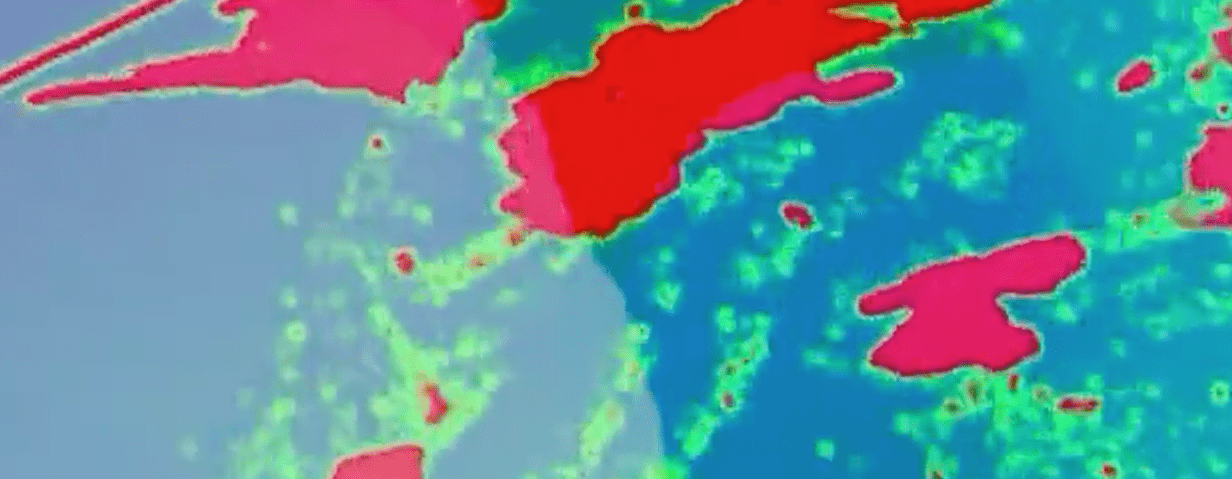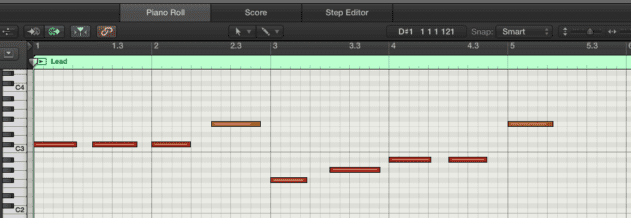The Breakdown is a series in which we explore some of our favourite tracks, explaining what makes them tick. In this instalment, Niall McCallum examines Lukid’s 2012 track ‘USSR’.
Luke Blair has been releasing quietly distinctive music since around 2006, including offerings on such titans of electronic music as Ninja Tune and Werk Discs. The material to be found on his two LPs to date is notoriously hard to pin down, drawing together an obviously eclectic range of influences into a melting pot of submerged, frayed sounds that tend to the deep and dilated. 2009’s Foma espoused a drowsy, smokey, almost dubby vibe and while a number of the tracks collected for 2012’s Lonely At The Top continued along this course, others heralded subtle shifts in Lukid’s sound towards something lighter, more ambient and arguably more evocative.
‘USSR’ was released as a free download in 2012 (with the Nic Hamilton-directed video following in October) as a teaser for the album. It’s a tune that manages to be both remarkably straightforward and casually mysterious, seemingly open and easy to read yet containing traces of something buried far beneath its worn surface.
Packed full of dusty analogue synth tones, mellow drums, distant, floating pads and lashings of vinyl crackle, on the surface ‘USSR’ is a classic example of Lukid’s lush, lo-fi sound. An injection of less obvious but more unusual ingredients, however, pushes this tune beyond his typical stalking ground.
Structurally Speaking
Made up of relatively few core elements, ‘USSR’ plays out at 147bpm with its melodic parts residing in the key of A# minor. Structurally, the track is also really quite unadventurous: it opens by stating its main synth riff; its two-piece drum part never changes after the introduction of the hi-hats and the main riff interchanges with pads and a bassline to sketch out the track’s four-minute duration. Breaking some of these elements down individually, however, reveals more interesting and complex interactions at play.
The time divisions of the different musical parts in ‘USSR’ are a prime example of the hidden quirkiness that makes the track so compelling. First, let’s consider the main synth part that opens the track:
Audio PlayerInitially, this part feels like it’s in 3/4 time, given its lilting, waltz-like rhythmic pattern and the accompanying chord changes which appear to occur on the first beats of the first, third, fourth and fifth bars of the riff as shown below:
To make this interpretation of the timing easier to follow, here’s how the lead would sound with a 3/4 metronome click to match the notation above:
The first clue that things aren’t quite so simple becomes clearer at the end of each repetition of this main synth line, where it feels like there’s not quite enough space before the loop begins again. Our initial impression of 3/4 is further knocked awry with the introduction of a hi-hat pattern and the beginning of the drum groove proper at 0:19. Here’s a simplified version of the pattern:
The syncopated hi-hats and additional, weightier kick drum part totally throw off our earlier assumption. The drum groove is in 4/4 and doesn’t seem to match up with the very beginning of the synth line. Here’s how they interact, notated in 4/4 (kick in green, hat in blue, synth above as before):
And here’s how that sounds:
Audio PlayerThe feel of the synth line is best described in four bars of 3/4 and one of 4/4, whereas the drums are in straightforward 4/4. This allows the drums and synth line to match up and repeat a constant four bar pattern of 16 beats in total, despite not quite sitting together comfortably within each repetition. The arrival of the bassline at 1:19 shores up the whole thing, as it moves with the first beat of the drum groove despite also changing chords along with the synth lead (although always a beat ahead).
Of course, it’s only upon closer inspection that any of this becomes clear, as the parts seem to fit together, albeit in a more jagged, jigsaw-like fashion than we’re used to. This slightly off-kilter rhythmic interaction is a huge part of ‘USSR”s magic – something feels odd and intriguing but it’s very difficult to put your finger on exactly what.
The reasons why this technique is relatively uncommon in dance music are fairly self-explanatory: neat loops of clearly defined 4/4 patterns are easier to mix and easier to dance to. But the rhythmic complexity of ‘USSR’ perfectly demonstrates the benefits of stepping away from simplistic rhythms now and again.
Timbre
One of the most immediately satisfying elements of ‘USSR’ is its gorgeous timbral palette. Both bass and synth parts have that gloriously warm, low-pass-filtered instability that any lover of electronic sound can instantly recognise. The deep, saturated kick drum and dusty, crackly percussion groove first heard at the track’s opening also contribute to the vintage, mellow timbral colour of the track that in turn imbues it with a nostalgic quality.
Before we get all red-eyed and sniffly however, the bit-crushed hi-hats that first appear at 0:19 punctuate the lo-fi mix with a much heavier and snappier sound. The contrast between them and the much gentler quality of the synths makes the hats stand out much more than usual, propelling the groove onwards and more than making up for ‘USSR”s lack of a snare or clap sound.
That Human Factor
Aside from the drums and synths, Lukid introduces a human presence into ‘USSR’ with two short, repeated samples. One is a vowel utterance that may well have been taken from a sample of speech – the sound glissandos rather elegantly between two notes (C# and D#) in key with the synths, forming an ostinato or drone along with the other sound that seems to be a sample of someone (or something) breathing. Both first appear at 0:34, taking in the introduction of the bassline before leaving the mix at 1:55.
The coupling of these vocalisations with the track’s chord progression and nostalgic sound create a deftly haunting, mournful impression. As with so many of the best electronic tracks, the characteristics which define ‘USSR’ are remarkably simple but combine to create something way more than the sum of its parts.



08.54 AM
Really good stuff as always. Thanks for this.
04.12 AM
Thank you guys. Diggin it.
05.38 PM
very nice analysis!